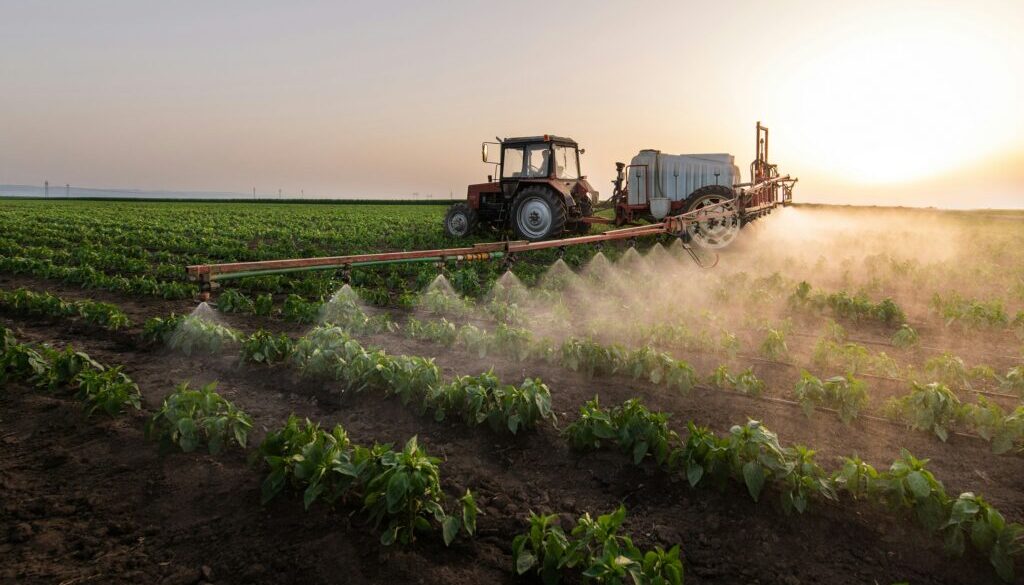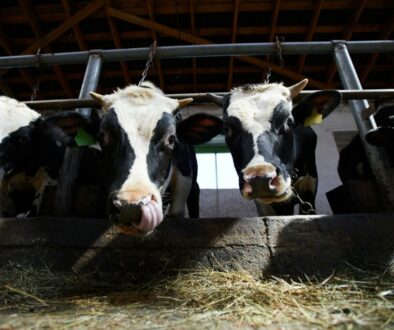Agricultural chemicals are more toxic to insects than previously thought
New research provides evidence that chemicals used in farming may be more harmful to insects than previously thought, contributing to worldwide declines in important species.
In a wide-ranging, first-of-a-kind study published October 24 in the journal Science, scientists found that extremely small, sublethal concentrations of over 580 pesticides, herbicides, fungicides and other chemicals can have serious negative impacts on the behavior and subsequent survival of certain insects.
The scientists tested some of the chemicals on fruit fly larvae, mosquitoes, and butterflies.
The results were “very shocking,” said study co-author Justin Crocker, a researcher with the European Molecular Biology Laboratory in Heidelberg, Germany.
The study bolsters the case that agrochemicals play a big role in plummeting populations of insects, a phenomenon that can gravely harm food production since certain insects are needed to pollinate key food crops.
“A bit scary”
In the paper, researchers exposed 75 fruit fly larvae to three concentrations of 1,024 different agrochemicals. The smallest level tested (2 micromoles) is well within the range found in the real world; for example, it’s not uncommon to find this concentration of the herbicide glyphosate in streams near crop fields.
After only 16 hours of exposure, they transferred the insects to vials containing chemical-free food, and filmed their behavior. More than half of these substances caused discernible changes in the behavior of developing insects.
These behavioral shifts included changes in the way the larvae crawled, turned, or otherwise moved their body around. Over 380 non-insecticide pesticides affected many of these traits, as well as a tendency toward “abnormal wandering,” which is linked to a lower likelihood of long-term survival.
“It was definitely a bit scary for us,” Crocker said, especially when imagining the massive scale of what is happening to insects out there in the real world.
The authors also tested some of the chemicals at higher ambient temperatures and found the effects were much more pronounced.
Some of these chemicals had no effect on fitness at lower temperatures, but when the study environment was heated up a few degrees, “it turns to absolute lethality,” Crocker said. “These are not subtle differences.”
That result jumped out at Charlie Outhwaite, a research fellow at the Zoological Society of London who wasn’t involved in the paper.
“Given the climate warming that has already occurred and that will continue to occur, it seems likely that the real-world impacts of pesticide applications will increase considerably if changes are not made,” she said.
A landmark study
Several other outside researchers were astounded by the paper and what it means for the so-called “insect apocalypse.”
“I have conducted research on the impact of toxins on insects for the last 48 years and I am shocked by the severity of the effects that a high percentage of the 1,024 chemicals tested have,” said Philip Batterham, a toxicologist at the University of Melbourne who wasn’t involved in the paper. “This is a landmark publication.”
Most of these chemicals are not considered to be insecticides, but they have pronounced insecticidal activity, said researcher Francisco Sanchez-Bayo, who added he was “surprised by the large number of non-insecticide chemicals that have serious effects on reproduction.” Which is, of course, vital for animal populations to survive.
Sanchez-Bayo co-authored a 2019 study in the journal Biological Conservation which investigated the causes the global insect declines, concluding the habitat loss caused by converting land to intensive agriculture was a primary cause, with agrochemicals also playing an important role.
Insect populations and declines vary greatly from place to place, and a few nature reserves seem to have experienced little change in recent decades. But an overall drop is unmistakable, especially in Europe. In Germany, for example, research suggests the mass of flying insects has declined more than 70% in recent decades.
In the long-term, Crocker and colleagues want to create a new platform for measuring chemical toxicity. In the past, many substances have been judged based on much more blunt measures, such as the LD50 — the quantity that kills 50% of any given population of animals.
“The insects are clearly in decline around us, and these [agricultural chemicals] are clearly a driver,” Crocker says. “If you’re changing the behavior in these systems it shouldn’t be too much of a stretch to say, it’s impacting the populations.”
(Featured image by Getty Images for Unsplash+.)




